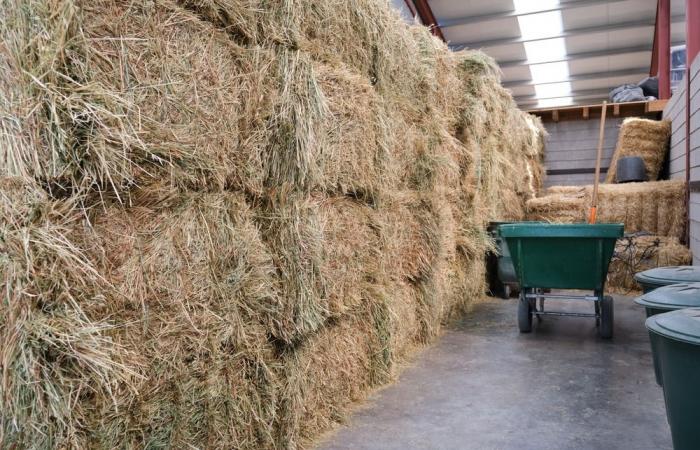Prevention begins on the fields. Rigorous respect for the stages of haystroke is essential: mowing, tangling, swirls, then pressing within 24 to 48 hours if the conditions are optimal. A good benchmark: the dry matter content (MS) of fodder must be more than 84 %. Backlin leaves, dry stems, lack of humidity to the touch … As many signs that the boot can be pressed without risk.
The key: dry and well -monitored fodder
Otherwise, too green or poorly dried fodder enters into fermentation once stored. This fermentation can quickly increase the temperature at the heart of the boots at more than 80 ° C, a threshold from which a spontaneous fire can be triggered.
Connected probes
Faced with these dangers, more and more Breton operators invest in connected probes which allow real -time monitoring of the temperature of the boots, a tool now essential to avoid disaster.
Pique directly in the hearts of the balls, these probes measure the temperature every hour. In case of overheating (beyond 75 ° C), an alert is sent directly to the farmer’s mobile. The identification of each probe makes it possible to precisely locate the overheating boot. It is then possible to intervene in time, by cutting the boots concerned and by promoting ventilation.
Please note: if the temperature exceeds 80 ° C, it is crucial not to handle the boots. The simple fact of moving them could cause a conflagration. In this case, isolate the premises, evacuate the equipment and immediately prevent help.
Aids to equip yourself despite the shortage
The global semiconductive market, essential for the manufacture of probes, remains under tension. Delivery times lie down. For this reason, it is advisable to anticipate your orders before the holiday period.
-Groupama, via its network of agricultural risk prevention experts, offers personalized support to operators wishing to equip themselves.
Storage practices to be secured
In addition to drying and monitoring, storage itself must meet strict criteria. It is advisable to keep the balls away from heat and sparks (electrical posts, thermal engines), activate the battery cuts on agricultural machinery, and to maintain the clean area, ventilated and free from flammable debris.
Segment stocks, space the buildings (at least 10 to 15 meters depending on the stored volumes), install verified fire extinguishers: so many simple measures which can limit propagation in the event of fire departure.
Anticipate to secure harvest
It is not only a question of technology: prevention is also based on the organization. Provide separate storage areas, establish a precise calendar of haystroke operations, manually control the temperature in the absence of a probe, or even limit the stacking height of the boots are simple but effective gestures.
Farmers are the first players in their security. The transmission of good reflexes, especially to young people installed, is also essential. Chambers of agriculture and insurers like Groupama can play a key role in this awareness.
Each year, fodder fires cause losses estimated at several million euros in Brittany. Beyond material loss, these claims hardly affect farmers’ morale. By adopting a preventive approach, operators protect not only their production tool, but also their peace of mind. Security begins with anticipation: do not let fire destroy a year of work.








